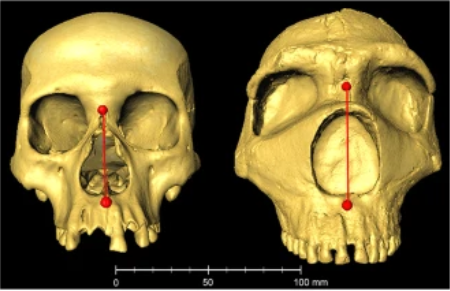Neanderthal gene variants associated with greater pain sensitivity
 Kaustubh Adhikari's recent paper Neanderthal introgression in SCN9A impacts mechanical pain sensitivity, published in Communications Biology, suggests that individuals with certain Neanderthal variants in a gene are more sensitive to pain. Springer Nature provided the following lay summary of the work.
Kaustubh Adhikari's recent paper Neanderthal introgression in SCN9A impacts mechanical pain sensitivity, published in Communications Biology, suggests that individuals with certain Neanderthal variants in a gene are more sensitive to pain. Springer Nature provided the following lay summary of the work.
Individuals carrying three so-called Neanderthal variants in the gene SCN9A — which encodes a sodium channel that is expressed at high levels in sensory neurons that detect signals from damaged tissue — are more sensitive to pain from skin pricking after prior exposure to mustard oil, according to a study published in Communications Biology.
Previous research has identified three variations in SCN9A — known as M932L, V991L, and D1908G —in sequenced Neanderthal genomes and reports of greater pain sensitivity among humans carrying all three variants. However, prior to this study the specific sensory responses affected by these variants was unclear.
Kaustubh Adhikari, David Bennett, Andrés Ruiz-Linares and colleagues measured the pain thresholds of 1,963 individuals from Colombia in response to a range of stimuli. The D1908G variant was present in around 20% of chromosomes within this population and around 30% of chromosomes carrying this variant also carried the M932L and V991L variants. The authors found that the three variants were associated with a lower pain threshold in response to skin pricking after prior exposure to mustard oil, but not in response to heat or pressure. Additionally, carrying all three variants was associated with greater pain sensitivity than carrying only one. When they analysed the genomic region including SCN9A using genetic data from 5,971 individuals Brazil, Chile, Colombia, Mexico and Peru, the authors found that the three Neanderthal variants were more common in populations with higher proportions of Native American ancestry, such as the Peruvian population, in which the average proportion of Native American ancestry was 66%.
The authors propose that the Neanderthal variants may sensitise sensory neurons by altering the threshold at which a nerve impulse is generated. They speculate that the variants may be more common in populations with higher proportions of Native American ancestry as a result of random chance and population bottlenecks that occurred during the initial occupation of the Americas. Although acute pain can moderate behaviour and prevent further injury, additional research is needed to determine whether carrying these variants and having greater pain sensitivity may have been advantageous during human evolution, they add.

